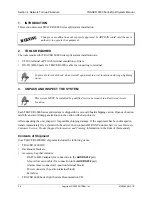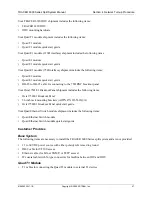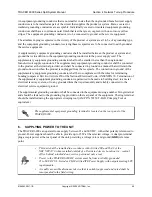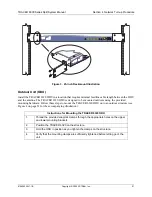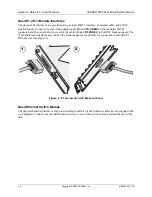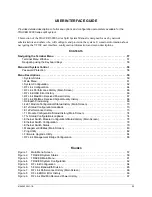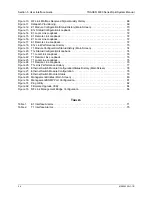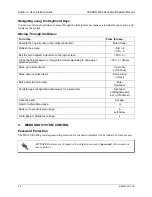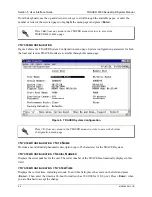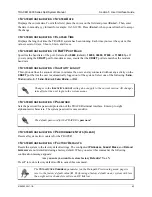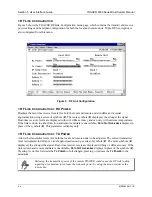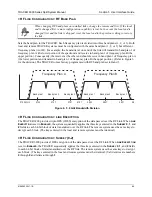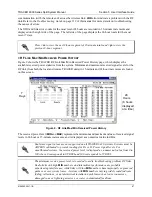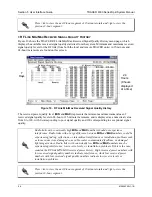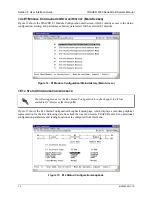
Section 5 User Interface Guide
TRACER 6000 Series Split System Manual
60
612806320L1-1B
B. Module Status
A visual status of the current installed modules. The modules are listed in the order they are installed
(Module 1 on top and Module 2 on the bottom).
C. RF Status
A graphical indicator of the RF links is located beneath the Elapsed Time display. The status of the
received radio link is indicated as
RF U
P
or
RF D
OWN
for each direction. This RF status display
corresponds to the
RF DWN
LED on the front of the unit.
D. Remote System Status
The right portion of the TRACER System Status menu page reports the status of the remote TRACER
(the system across the wireless link from the active terminal). If the RF link is down in either direction,
D
ATA
N
OT
A
VAILABLE
is displayed in place of the remote system status information.
E. Local System Status
The left portion of the System Status menu page reports the status of the local TRACER (the system
where the active terminal is attached).
F. Frequency Plan
Displays the frequency plan (A or B) for the TRACER unit. For an operational TRACER system, you
should have one A and one B frequency plan.
G. Rx Quality
Displays an indicator of receive signal quality that is not necessarily related to receive signal level (for
both the local and remote units) using a series of symbols (
#
) and a numeric value. The more symbols
(
#
) displayed, the better the signal quality. This indicator is related to signal-to-noise ratio and features
a colon (:) marker to indicate 10
-6
bit error rate. This indicator is useful as a diagnostic tool to help
4
X
T1 M
ODULE
A visual status of current errors/alarms on the T1 interfaces (for both the local and remote
systems) is provided on the TRACER System Status menu page. The four available T1
interfaces on the module (
A
through
D
) are only displayed if the interface is mapped in the
D
ATAPATH
P
ROVISIONING
; a
–
is displayed for inactive, unmapped interfaces. The interface
displayed in reverse highlight indicates an active error or alarm condition on the specified
interface (
A
through
D
). Individual T1 status pages (accessible from the Main menu) provide
detailed T1 information.
4
X
E1 M
ODULE
A visual status of current errors/alarms on the E1 interfaces (for both the local and remote
systems) is provided on the System Status menu page. The four available E1 interfaces on
the module (
A
through
D
) are only displayed if the interface is mapped in the
D
ATAPATH
P
ROVISIONING
; a
–
is displayed for inactive, unmapped interfaces. The interface displayed in
reverse highlight indicates an active error or alarm condition on the specified interface (
A
through
D
). Individual E1 status pages (accessible from the Main menu) provide detailed E1
information.
Q
UAD
E
THERNET
S
WITCH
M
ODULE
A visual status of current errors/alarms on the Ethernet interfaces (for both the local and
remote systems) is provided on the System Status menu page. The configured data rate (on
the Datapath Provisioning page) is displayed. Individual status notations for the available
Ethernet interfaces are available through the Quad Ethernet Switch Module Status page.

